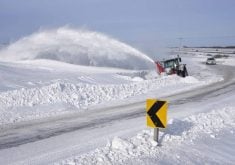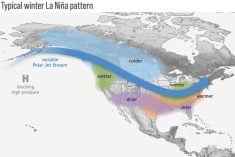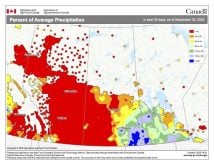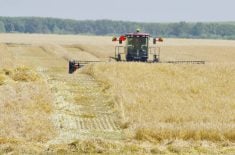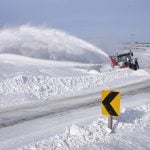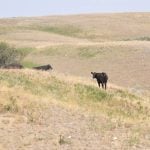El Niño can affect the kind of weather we might expect this winter.
The formation and movement of one system can impact how other systems behave around the world. This is called teleconnection, which refers to the long-distance relationships or connections between climate events that occur in different parts of the world.
This fundamental concept in climate science explains how climate events in one part of the world can have far-reaching consequences. It underscores the complexity and interconnectedness of the Earth’s climate system.
Read Also
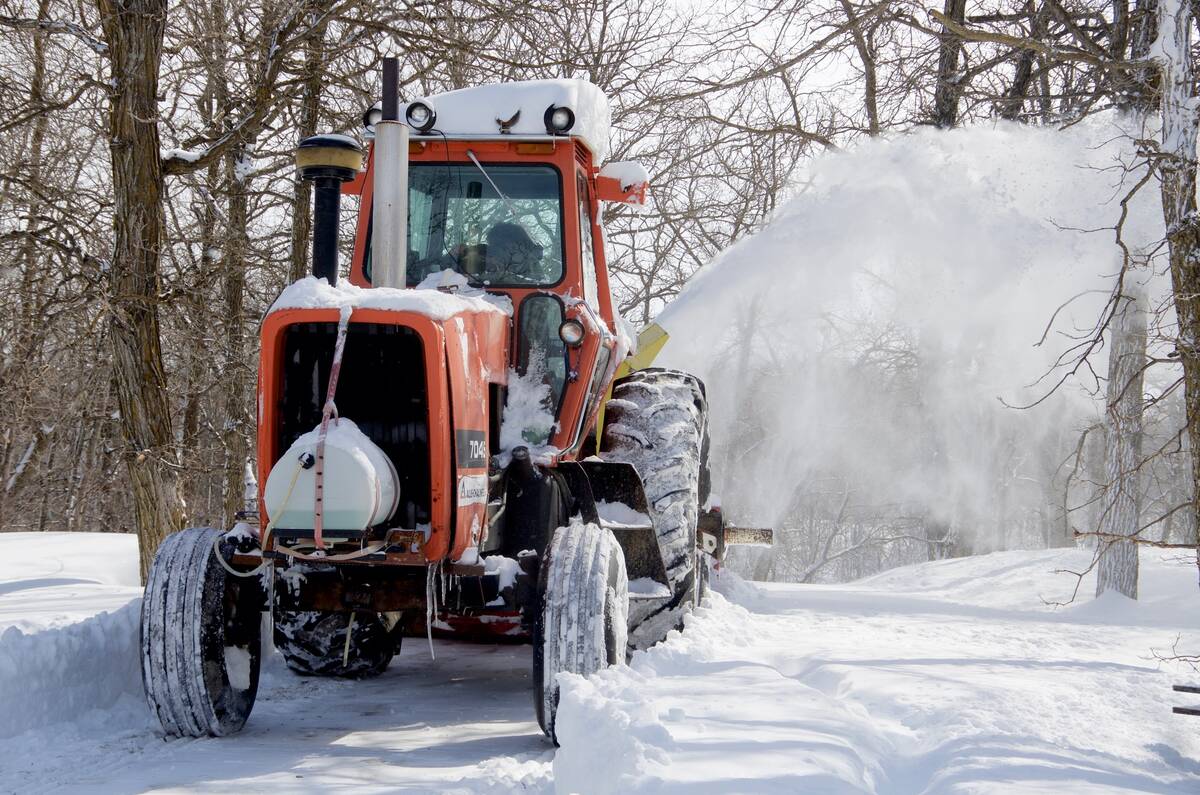
Prairie farms race to get ready for winter 2025
Equipment needs to be winterized and stored; fall field work needs to be done and there are a million tiny jobs to make sure both the farm yard and farm house are ready for the snow to fly
For example, say there’s a strong ridge of high pressure over the eastern Pacific Ocean. This ridge will force the jet stream to take a path that often results in storm formation over central North America. If the high-pressure ridge were to move or weaken, it would eventually have an impact on weather in our neck of the woods.
Now take this same scenario and examine the weather systems that influence that ridge of high-pressure and the connections to the systems around it. In the case of El Niño, we have changes in one part of the Pacific that are connected with weather systems in a totally different part of the ocean.
Taking this view even further, weather systems around us will impact any storm systems that might form under this scenario. Now you begin to see how complicated it can get. The conditions across the Pacific Ocean might be favourable, through teleconnections, to bring a certain type of weather to our region, but conditions across our region, again through teleconnections, might override what is happening across the Pacific Ocean.
With this in mind, you start to understand how difficult it can be to create long-term weather forecasts. But wait, it gets even more complicated!
We can throw chaos theory into the mix. First, I admit my understanding of chaos theory is rudimentary at best, even after looking it up using one of the AI programs. That said, here is how I see chaos theory’s impact on weather and forecasting.
Chaos theory is based on the idea that what appear to be random events instead have a pattern, and if so, can be predicted. The problem is, we can’t measure the environment affecting the event in enough detail to determine what will happen.
There’s a classic example is in the movie Jurassic Park, in which several drops of water are placed on a hand and each drop takes a different path that appears random. Under chaos theory, the paths taken are not random and if we were able to measure every little thing about the environment, such as the angles of the hairs, pulse rate, etc., that affect the drop of water, we could predict the path.
Another example is a blender. As you blend something, certain patterns develop in the swirl of materials, but that is because you are looking from the outside in. If you were inside the blender, it would appear totally chaotic because you couldn’t see or measure what was happening with all the different particles.
In weather, this same idea holds true. The problem is, we just can’t measure our atmosphere and surface conditions in enough detail to know how everything will interact. Due to teleconnections and chaos theory, a relatively small change to conditions can have a dramatic effect on weather at any one location and this impact tends to be amplified as distance increases from the initial change.
Take this theoretical possibility.
A freshly tilled farm field on a sunny day heats up enough to cause free convection. If the field was not tilled, this would not have happened. The extra heat absorbed by this field and released into the atmosphere can lead to development of a thundershower. This thundershower builds into a storm.
This storm captures and cuts off the upper-level flow of moisture into a larger area of low pressure nearby. That area of low pressure then weakens, at least temporarily, but allows a nearby and strengthening area of high pressure to build and clear the skies.
So, instead of an area with a cloudy and possibly rainy day, there was a nice sunny day, all because a farmer tilled the field.
This may sound a little extreme but that is what chaos theory is all about. If we tie this to El Niño and teleconnections, we see large changes instead of a small change in the atmosphere. These changes influence the way the atmosphere behaves further downstream. This alone gives us an idea of weather we can expect, but any additional small changes thanks to chaos theory could lead to changes in the overall pattern that we can’t predict.
This is why we do not always see the same weather pattern during an El Niño.
In a textbook example of El Niño, our part of the world will see a warmer and drier than average winter– but not every time. We have also had cold and snowy El Niño winters.
If you are a betting person, then maybe 50 per cent odds are pretty good but that means there is about a 25 per cent chance that the winter will be average and a 25 per cent chance it will be colder than average.
If I were to place a bet, I would go with an above-average winter, but wouldn’t put too much money on it.




